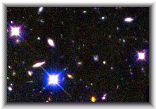
|

| |
|
The RIXOS optical identification work was facilitated by an award of ``International Time'' on the La Palma telescopes by the Comite Cientifico International, the body that oversees use of Canarian astronomical telescopes. The telescopes used for RIXOS were the three that comprise the Isaac Newton Group, namely the 4.2m William Herschel Telescope (WHT), the 2.5m Isaac Newton Telescope (INT) and the 1.0m Jacobus Kapteyn Telescope (JKT), and the 2.5m Nordic Optical Telescope (NOT). The observational programme was carried out in several observing runs in three observing semesters in the interval February 1993 to March 1995. All the spectroscopy was done on either the WHT or INT, while the primary telescopes used for the imaging programme were the NOT, INT and JKT, with limited deep imaging also being conducted on the WHT. The analysis of the wealth of optical and X-ray data gathered in the course of the RIXOS project have produced results in a wide range of subjects in Astrophysics. Spectroscopy Imaging SpectroscopyThe WHT spectroscopy utilised the twin-armed ISIS spectrograph. The input starlight is separated into blue and red beams by a dichroic filter which, for the RIXOS programme had a crossover wavelength of 5400 Å. Each of the two spectrograph arms was equipped with a TEK 1124x1124 CCD chip. In the standard configuration used in the low-resolution RIXOS work, the blue spectrograph arm was equipped with the R300B grating, which yielded spectra with a dispersion of approximately 1.5 Å/pixel. The R158R grating was used in the red arm yielding approximately 2.5 Å/pixel. The lower threshold of the blue grating was set at 3700 Å while the upper threshold of the red grating was set at 8400 Å. This configuration provided some overlap to aid cross-calibration of the two arms.
Much of the INT spectroscopy utilised the Faint Object Spectrograph (FOS), a
crossed dispersed fixed format spectrograph that yields spectral coverage
between the atmospheric cut-off and
Some RIXOS sources have bright stars in or near their X-ray error circles, many of which have not previously been recorded as `active'. In order to search for line emission indicative of chromospheric activity, and confirm that the star was the source of the X-ray emission, we recorded some higher resolution
spectra of such stars using the IDS. These covered the CaII H&K lines (3934Å, 3963Å) and the H All spectroscopy of single objects was done where possible with the slit at or close to the parallactic angle to avoid colour-dependent light loss. Occasionally, to maximise observing efficiency, the spectrograph slit was orientated to as to place two (or more) nearby objects on the slit together. In such cases, however, we tried to ensure that the observations were made at low zenith distance, to minimise differential refraction effects. ImagingSeveral RIXOS fields were imaged in the R band at the beginning of the programme with the FORD CCD camera on the INT. This 2048x2048 device covers a large field of view (11 arc minutes) so that the whole of the central region of the PSPC field, used for RIXOS, could be imaged in four exposures. Additionally, short exposures of the central region of each PSPC field were made under photometric conditions, overlapping the corners of each of the four main images. This allowed us to derive accurate R magnitudes for candidates in all the fields. The CCD imaging instrumentation available on the NOT was evolving rapidly during the RIXOS programme. Consequently a variety of cameras and formats were used, covering a region of sky between 1.5 and 3 arc minutes square with a pixel size of about 0.2 arcsec. The JKT CCD camera covered a field of view of about 6 arc minutes square, with a pixel size of approximately 0.3 arc seconds. A limited number of deep exposures were obtained using a CCD camera mounted at the auxiliary focus of the WHT. This provided images of a 1 arc minute diameter region of sky which was recorded on a TEK 1024x1024 CCD chip at a spatial scale of 0.11 arcsec per pixel. Such exposures were interleaved with ISIS spectroscopy (which can be done with minimal overhead) to make deep images of selected fields during intervals of very good seeing. | ||
|
Last modified 12th July 1999
| ||
 1
1  m in two orders. Spectral resolution is 16 Å in the red (first order), and 8 Å in the blue.
FOS was unavailable for the final RIXOS runs. Instead we used
the Intermediate Dispersion Spectrograph (IDS) with the R150V grating and a TEK 1124x1124 CCD chip. This gave coverage between 3600 Å and
m in two orders. Spectral resolution is 16 Å in the red (first order), and 8 Å in the blue.
FOS was unavailable for the final RIXOS runs. Instead we used
the Intermediate Dispersion Spectrograph (IDS) with the R150V grating and a TEK 1124x1124 CCD chip. This gave coverage between 3600 Å and  line in separate exposures.
line in separate exposures.